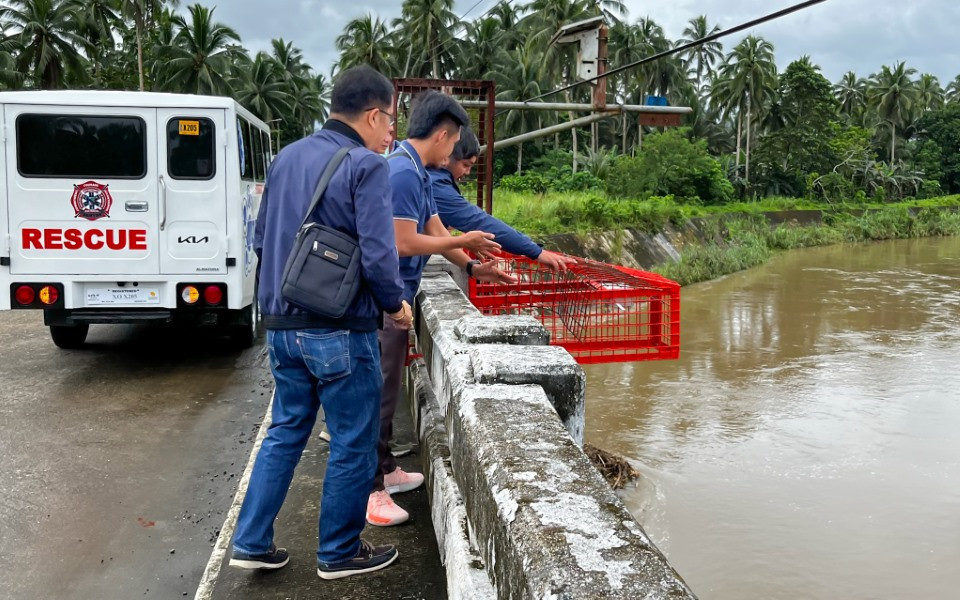Why Early Warning Systems Deserve More Attention in Asia-Pacific Climate Security
Published: Jul 4, 2025 Reading time: 5 minutes Share: Share an articleFrom Cambodia to Nepal, early warning of natural disasters is not an add-on to humanitarian response. It is humanitarian response – at its smartest and most effective.

*This article first appeared in The Diplomat on 04 June 2025.
For communities and nations across Asia and the Pacific, climate-related disasters are no longer distant threats – they are daily realities. Steppe wildfires in Mongolia, floods in Cambodia, lightning strikes in Nepal – these are not hypotheticals. They’re happening now, and they’re intensifying.
The threats posed by climate change aren’t just environmental; they’re also deeply linked to national and regional security. Disasters can destabilise communities, strain governments, and fuel displacement. Countries across the region know this all too well.
And in an era of dramatic cuts to humanitarian aid and overseas development assistance, one truth remains: the cost of inaction is far greater than the cost of preparedness.
Few investments in disaster preparedness deliver as much impact for so little cost as early warning systems. A $1 investment in early warning can save up to $10 in disaster losses. Globally, these systems offer a return of 3 to 16 times the cost, according to the Global Commission on Adaptation and UNDRR.
That’s why, across the Asia-Pacific – from Cambodia and Laos to Nepal, Mongolia, and the Philippines – we must accelerate our work with national and provincial governments, as well as frontline communities, to demonstrate what’s possible when early warning systems are treated not as luxuries, but as necessities. These systems may require modest upfront investment, but their long-term value – in lives saved, crops protected, and livelihoods preserved – is immeasurable.
But there is good news. Technological advances have made early warning systems more affordable and scalable than ever before. Local and national governments are on board, too, investing their own resources to address gaps with easy, smart, and affordable technologies. And, communities see the value. We know this because each year we send between 70,000 to 100,000 Interactive Voice Response calls where community members respond and provide inputs. Usually, one call means five people will receive the message as they will inform their family and neighbours. These public-private collaborations cost almost nothing to maintain but reach thousands of people.
The SMS-based alerts we’ve deployed are either free or cost less than $0.01 per message, thanks to telecom providers who see this as part of their corporate social responsibility. For roughly $15,000 to $20,000 a year, we can run a national EWS covering entire provinces and countless communities. That’s the cost of a single short-term emergency response mission – and the returns are lasting.
In Nepal – where over a million lightning strikes annually kill more than 100 people – we’re piloting sensors that detect electromagnetic shifts in the air to anticipate strikes before they happen. At $4,000 apiece, each sensor covers a 32-kilometre radius. The result? More time for farmers to get to safety, for schools to delay outdoor activities, and for local authorities to activate community response protocols.
And disasters – both big and small – don’t impact everyone equally. Communities that are already marginalised or left out of decision-making are hit the hardest. People with disabilities, for instance, are up to four times more likely to die during a disaster. In Cambodia, 53 per cent of female-headed households reported receiving no warning ahead of the last hazard they faced, compared to 40 per cent of male-headed households. That gap isn’t just a statistic – it’s a warning sign that early warning systems aren’t truly working until they reach everyone.
That’s why inclusion isn’t just nice to have – it’s what makes early warning systems effective. In Cambodia, messages for SMS, radio, and TV are co-developed with diverse rural women – including young women and women with disabilities – to ensure the warnings are actually accessible to those most at risk.
Let’s be honest: these aren’t always easy investments to make. They require partnerships, trust, and a shared commitment to long-term resilience. But the alternative is far more expensive. Waiting for the next five disasters before scaling EWS would cost billions more in recovery, loss of productivity, and unnecessary human suffering.
The World Meteorological Organization agrees. It has found that the damage caused by a disaster can be reduced by 30 per cent if an early warning is issued, yet about one-third of the world’s population is not yet covered by early warning systems. The WMO estimated that globally, we could avoid losses of $3-16 billion per year through early warning systems.
We have the data and know-how. What we need now is a convergence. Governments, the private sector, insurers, development agencies, and even local community councils all have a role to play. We must shift our mindset: early warning is not an add-on to humanitarian response; it is humanitarian response – at its smartest and most effective.
To roll out early warning systems for all, we have more to do. We need to further develop multichannel approaches like SMS, interactive voice response, and wireless emergency alerts. We also need to invest in unified information channels where all actors across ministries and even regions, such as countries in the Greater Mekong Delta, to speed up information sharing and align procedures.
Whether we are preparing for steppe fires in Mongolia, floods across the Mekong Delta, or lightning storms in the Himalayas, the math is clear. These systems save lives. They protect livelihoods. And they unlock the kind of local resilience that allows communities – and nations – to not just survive but prosper.
Let’s stop treating preparedness like a side conversation. The time to scale-up investments in early warning systems is now.



